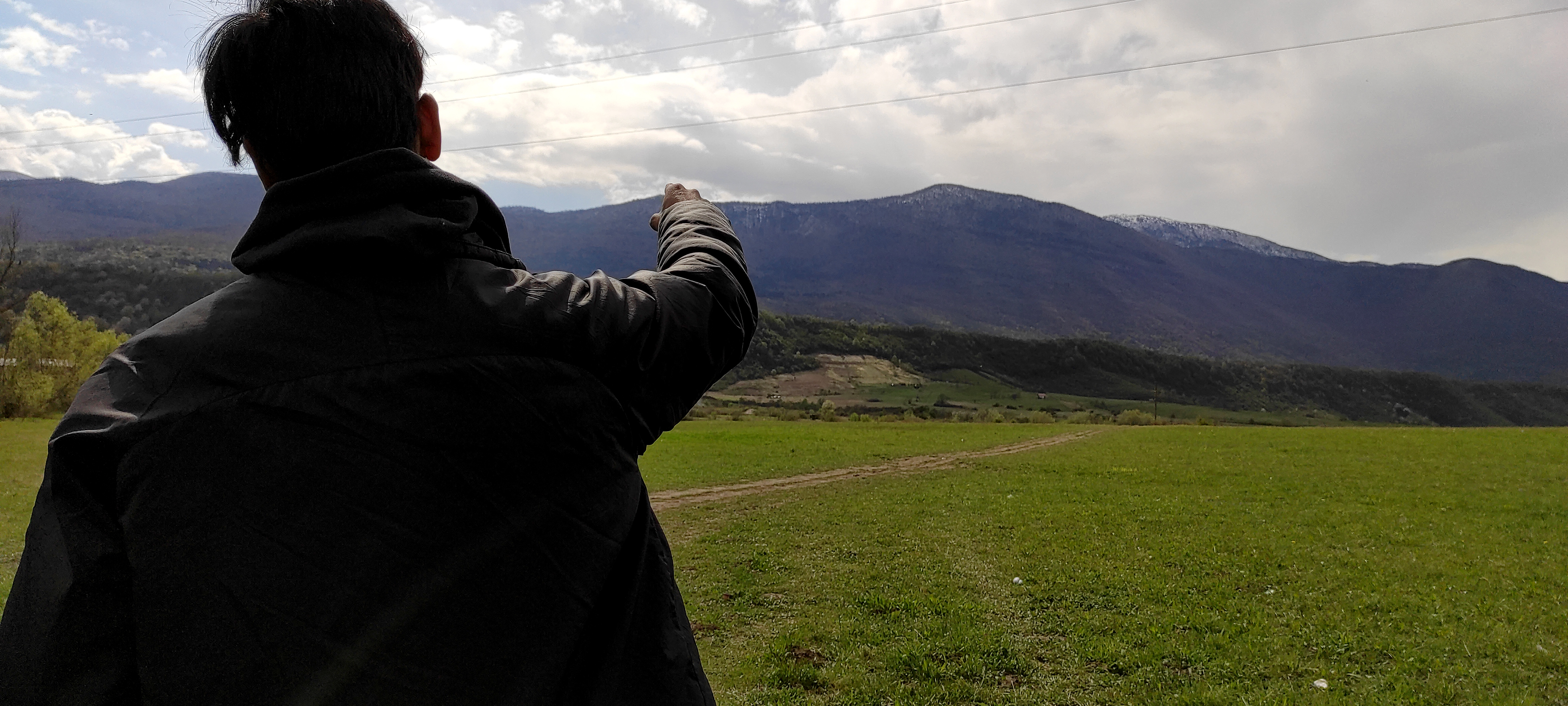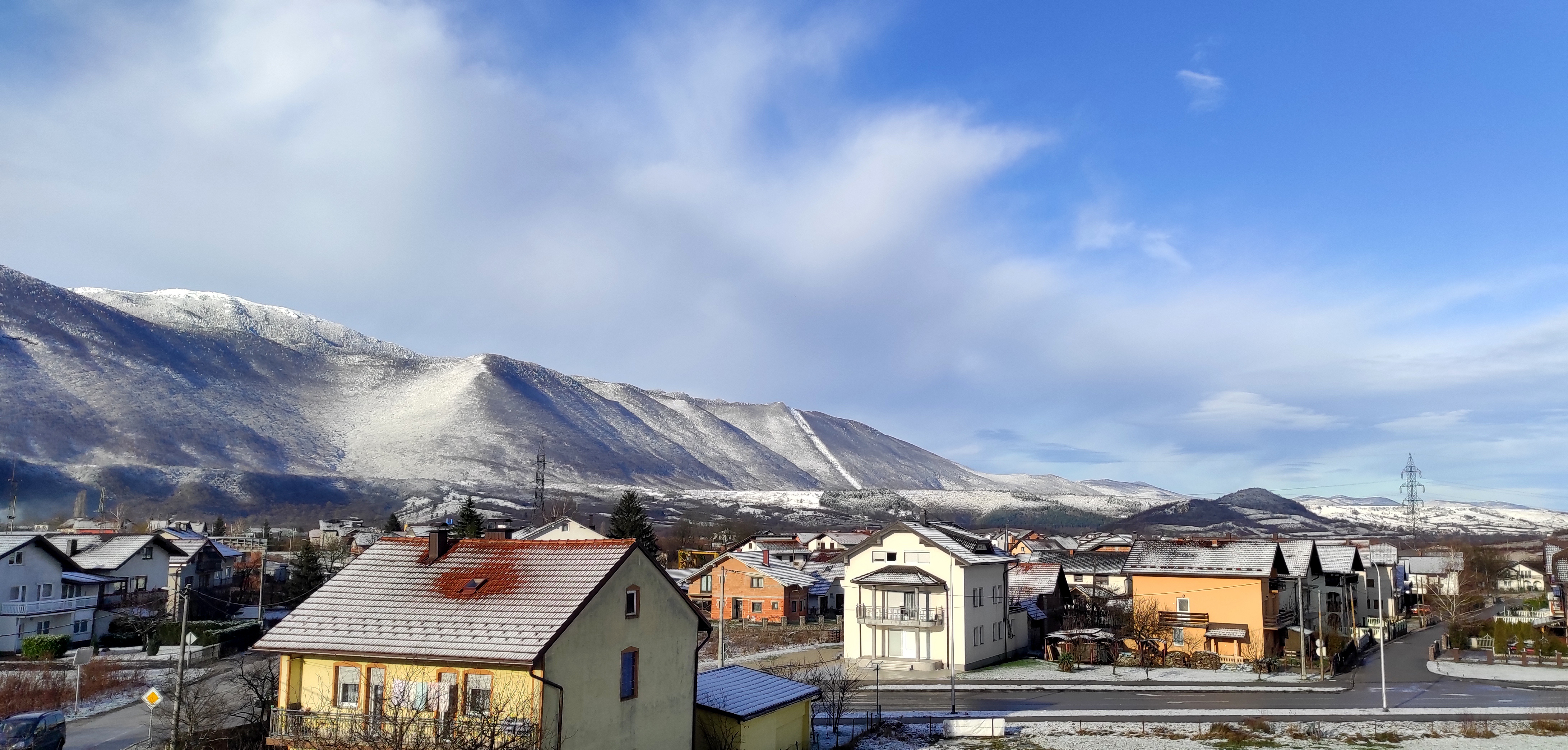Cutting Down Forests
In the context of migrant movement, cutting down forests, which is usually related to the practice of silviculture, defined as “the art and science of manipulating forest vegetation to enhance forest growth and establish new forest stands and wildlife habitat”, is used as an anti-migrant intervention in the natural landscape for the purported purpose of defending borders. Aside from cutting down willows and other vegetation along the Una river on the border between Croatia and Bosnia and Herzegovina, the media paid most attention to the felling of the forest on Plješivica, which, as part of the so-called integrated border management, was carried out by the state forest management company (Hrvatske šume) under orders from the Ministry of the Interior. This operation left a large plješiva (bald) line in the mountain, visible both from the air and from the foot of the mountain. The goal of creating such a clear space is to stop the movement of migrants or, according to a government report from 2018, to contribute “to the visibility of the state border (...) and the operational efficiency of technical equipment (especially thermal imaging systems), and the responsiveness of border police in combating illegal migration”. Although the felling of trees like the one at Plješivica, from an ecological perspective, most likely “disrupts forest management and reduces the future value of the forest”, it is not legally considered an anti-environmental act and devastation of forest given the institutions that implement these actions and their purpose. According to the Forest Act, forests and forest lands owned by the Republic of Croatia can be excluded from a forest management area for “the purpose of state border control or ensuring the visibility of the border line” at the request of the “central body responsible for internal affairs”. Cutting down forests in the context of irregularized migration can be seen as one of the elements of weaponized landscapes (Hameršak and Pleše 2021), and from a historical perspective, it can be seen as a successor to operations which involved removing all vegetation, in this case done in the context of an armed conflict, in the forest areas of Gorski Kotar, which were directed against the activities of the partisans and conducted by the Italian administration during the Second World War (cf. Klepac 1997: 53). Going further back in history, in the border area between Slavonia and the Ottoman Empire, the method of cutting in (“zasjeka”) was used (Andrić 2017: 73), also associated with tree felling in order to prevent passage. However, this method was not meant to create “empty space”, but to place the cut trees as obstacles on forest roads.
5/3/2022
Literature
Andrić, Stanko. 2017. “Šuma Garavica i 'ničija zemlja' na slavonsko-turskom pograničju u 16. i 17. stoljeću”. In Slavonske šume kroz povijest. Dinko Župan and Robert Skenderović, eds. Slavonski Brod: Hrvatski institut za povijest, Podružnica za povijest Slavonije, Srijema i Baranje, 61-117.
Hameršak, Marijana and Iva Pleše. 2020. "Forest, forest, forest. Sometimes we sleep. Walking, sleep, walking, sleep. It’s dangerous on this way. Weaponized Migration Landscapes at the Outskirts of the EU". Etnološka tribina 51/44, 204-221.
Klepac, Dušan. 1997. Iz šumarske povijesti Gorskoga kotara u sadašnjost. Hrvatske šume: Zagreb.



